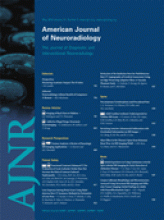We read with interest the comments from Drs Bendfeldt, Radue, Borgwardt, and Kappos to our recently published review.(1) Our scope was to summarize the most promising results obtained from the use of MR imaging for the assessment of gray matter (GM) pathology and dysfunction in patients with multiple sclerosis (MS) and to envisage the possible implications of such findings in the monitoring of new experimental treatments. As we discussed, the topic is extremely broad and includes not only our improved ability to detect macroscopic lesions in the GM(2) but also an urgent need to apply, in a systematic way, MR imaging techniques with the potential of quantifying occult damage in the GM, GM tissue volume loss, and topographic distribution of GM abnormalities and of establishing the role of brain plasticity in limiting the clinical consequences of tissue injury.
As pointed out by Bendfeldt and coworkers in their letter, the core part of which is strikingly similar to another letter they published previously,(3) and by ourselves in the review article, one of the results of this research was the demonstration of an association between T2 lesions in the white matter (WM) and GM abnormalities. Such an association has been demonstrated by many studies(1) in patients with MS by using different techniques and is supported by pathologic findings,(4) which showed that WM changes are accompanied by a significant burden of demyelination in the GM. Among these many studies, we also quoted the one that Bendfeldt et al published last year in Neuroimage,(5) and we are grateful to these authors for pointing out that an additional article dealing with the same issue is “in press,” which, for obvious reasons, we could not quote. Unfortunately, however, the biologic meaning of such a relationship and its timing are poorly known issues, which require further research. Voxel-wise methods for defining the regional distribution of lesions in the WM, combined with a regional assessment of GM atrophy distribution and progression, are certainly promising, especially in the context of longitudinal studies.
Nevertheless, as we discussed in our article,(1) there are many aspects of GM pathology in MS that have emerged during the past few years that also need to be considered. One of the most important is the presence of GM macroscopic lesions, which, as is the case of WM plaques, accumulate with time and are related to the progression of brain atrophy and disability.(6,7) How these GM lesions evolve with respect to WM ones is yet unclear. Another important aspect is the damage to “critical” WM fiber bundles, which might also be responsible for selective GM atrophy and disconnection syndromes in MS. As a consequence, we believe that the idea of responding in a clear-cut manner to such an important research question by applying voxel-based morphometry and lesion probability maps in isolation reflects a rather simplistic view of MS pathobiology and is likely to be insufficient.
References
- Copyright © American Society of Neuroradiology







